30
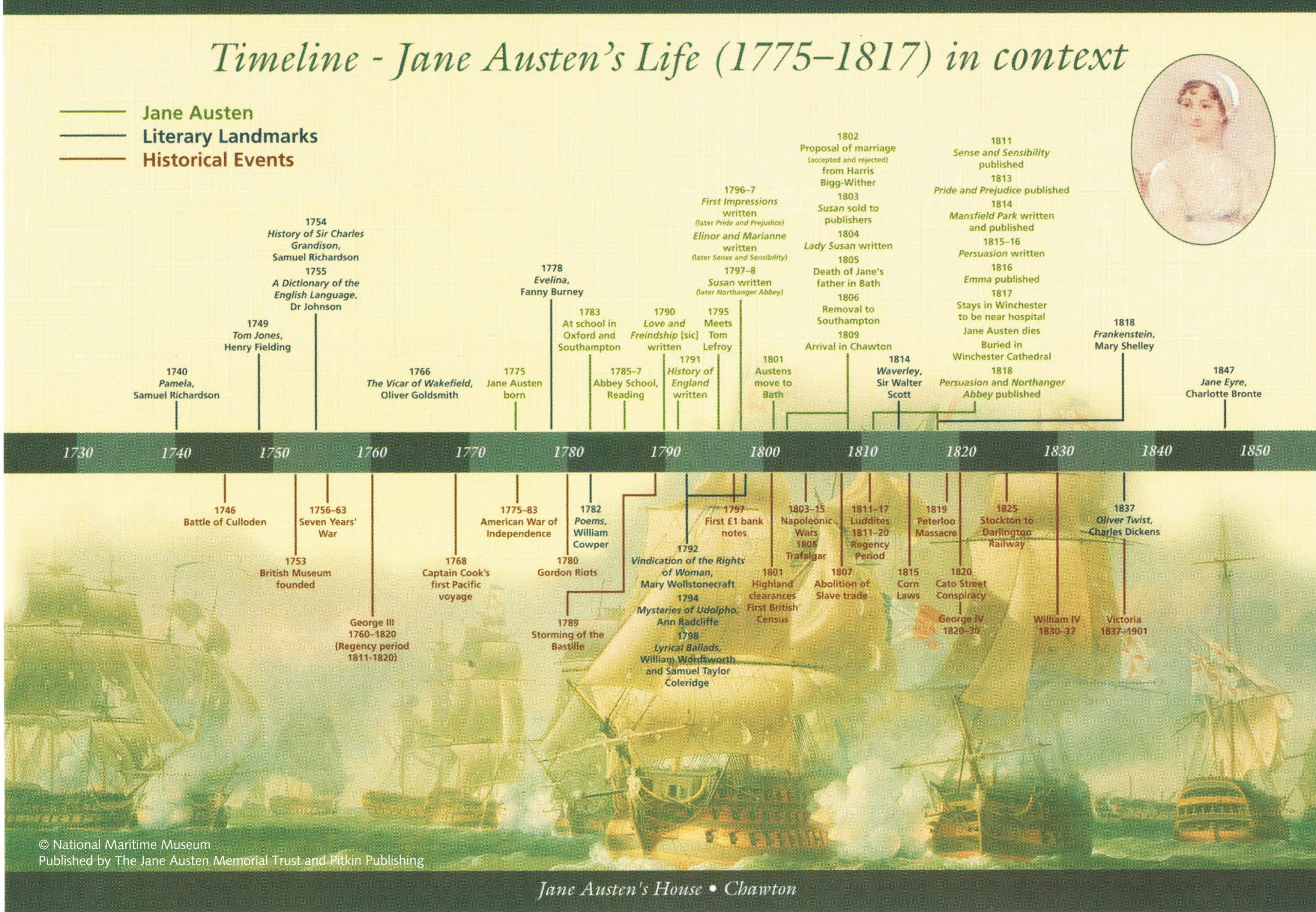
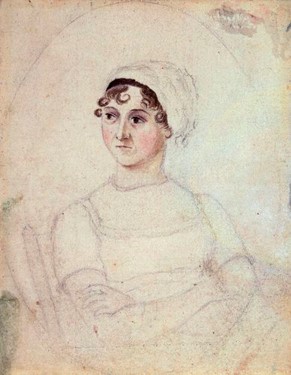
Jane Austen (1775-1817), one of England’s foremost novelists, was never publicly acknowledged as a writer during her lifetime. Jane Austen’s life was relatively short but it nonetheless produced a lasting legacy including six major published works.
Though it has only been relatively recently that her work has become mainstream – thanks in part to required readings in school, reproductions of her classical works at the bookstores and television and cinema productions covering her novels – the lure of the romantic period that Jane Austen created in the minds of her readers has resonated for decades. Her careful selection of characters placed in ordinary positions of their time, only to develop into a more dramatic situation by the turn of the last page, has kept readers revisiting these ageless classics time and again. Having read her works, one is left wondering who Jane Austen really was – how close were the predicaments in these works to her real life? What kind of woman was she in the world that she lived in? Did she ever find the love so elusive in her own novels?
Family

Jane Austen came into the world on December 16th, 1775. Born to Reverend George Austen of the Steventon rectory and Cassandra Austen of the Leigh family. She was to be their seventh child and only the second daughter to the couple. Her siblings were made up largely of brothers, which in some ways forced a close relationship with her elder sister, Cassandra (not to be confused with the mother whom also carried the name Cassandra – but further referred to as Mrs. Austen). In order of birth, the Austen children were as follows: James, George, Edward, Henry, Cassandra, Francis, Jane and Charles. Of all the brothers, it would be Henry to which Jane would form the closest bond with, playing the part of Jane’s literary agent in the later stages of her writing.
Growing up, the Austen children lived in an environment of open learning, creativity and dialogue. Mr. Austen worked away in the rectory and also tried his hand at farming on the side to earn more money for the growing family. Additionally, he would take on teaching roles within the home to outside children for additional funds. The Austen children would all grow within this close-knit family with Jane herself forming an exceptional bond with her father.
James Austen (1765-1819) Jane’s eldest brother was studious and went to Oxford University at the age of 14 in 1779 and was ordained as a cleryman in 1787. He married in 1792 when Jane was 17 to Anne Mathews who died only three years after their marriage in 1795. She bore one daughter, one of Jane’s favorite nieces, Anna (1793). James married again in 1797 to Mary Lloyd (1771-1843) with whom he had two children James Edward (1798) and Caroline (1805). Mary was not a favorite sister-in-law of Jane’s, it was her sister Martha Lloyd who came to live with the Austens in 1805 after the death of her mother. In 1800 James took over the curacy of Steventon when his father Rev. George Austen retired. James had some literary pretensions: he wrote a poem on Sense & Sensibility, wrote sermons, and from 1789-1790, with the help of his brother Henry Austen, edited a university magazine at Oxford called The Loiterer, which ran for sixty issues. He died two years after his sister Jane in 1819.
James’s daughter Anna (1793-1872) was Jane’s first niece and rather a favorite. Several pieces in Jane’s Juvenalia were dedicated to her. Anna, like her father, had some literary inclinations and worked on a never-completed novel, Which is the Heroine? with some help from her aunt but later destroyed the manuscript after the death of Jane. Anna married in 1814 to Benjamin Lefroy (born 1791) with whom she had seven children including Jemima (born 1815) and Fanny C. Lefroy (1820-1885) the author of MS Family History. Anna’s half-brother James Edward (1798-1874) and his sister Caroline (1805-1880) were more literarily inclined. They both solicited the help of their aunt in their youthful literary works, James even wrote a poem when he first found out that his aunt Jane was the author of Sense & Sensibility and Pride & Prejudice. He took on the last name Austen-Leigh after inheriting from a maternal great-aunt and great uncle. James married Emma Smith with whom he had ten children. In 1871 he published A Memoir of Jane Austen, he died in 1874. His son William Austen-Leigh (1843-1921) and grandson Richard Austen-Leigh (1872-1941) co-authored Jane Austen: Her Life and Letters in 1913. His sister Caroline Austen was the author of My Aunt Jane Austen in 1867.
George Austen (1766-1838) Jane’s second brother was nine years older than her. Not much is known of him beyond the fact that he was an invalid. He may have been born with a mental or physical impairment. It seems he was nonverbal, but Jane Austen communicated with him using sign language. The Austens hired a caretaker for George named Francis Callum in the local village. Although he was sickly, George lived for twenty-one years after his sister.
Edward (Austen) Knight (1767-1852) Jane’s third brother was a steady business-like young man. He was adopted in the early 1780s by his rich and childless cousins on his mother’s side, Thomas and Catherine Knight. In 1812, when he inherited their estate of Gosherham, in the county of Kent, Edward changed his last name to Knight in their honor. He married Elizabeth Bridges (1773-1808) with whom he had eleven children. His oldest daughter, Fanny Knight (1793-1882), was a favorite with both of her aunts. Jane dedicated some of her Juvenalia works to her also. Fanny’s mother died when she was sixteen and she often turned to her aunt Jane for advice, mostly romantic. It wasn’t until three years after Jane’s death that she married Sir Edward Knatchbull in 1820. They had nine children. It was Fanny’s grandson the 1st Baron Branboune who was the editor of Letters of Jane Austen (1884).
Henry Thomas Austen (1771-1850) Jane’s fourth brother was her favorite. He was witty and enthusiastic in whatever he did, but not always successful. He entered Oxford University in 1788 and co-edited the university’s magazine called The Loiterer, which ran for sixty issues. In 1816-1817 between the bankruptcy of his business (in which his brother Edward lost 20,000 pounds) and the death of his dear sister Jane, Henry went through a mid-life crisis. He did manage to publish the last two of Jane’s complete novels, Persuasion and Northanger Abbey, at the end of 1817. He eventually became a Calvinist-leaning minister and died in 1850. Henry married his and Jane’s cousin, Eliza Capot, Comtesse de Feuillide née Hancock (1761 – 1813). Eliza Hancock married a wealthy French count named Jean-François Capot, making her Comtesse de Feuillide, in 1781. They had a son named Hastings Louis Eugene Capot de Feuillide, who was sickly and possibly disabled. When the French Revolution started in 1790, Eliza moved back to England with her son, and they lived with her mother. In 1794, Eliza’s husband was executed by guillotine in 1794 for being loyal to the French monarchy. This left Eliza a widow (albeit a wealthy one) and single mother. Eliza and Henry married in 1797. While the fact that they were cousins was not an issue, their age difference (she was 10 years older than him) did raise eyebrows. They had no children and Hastings died in 1801.
Cassandra Elizabeth Austen (1773-1845) was named for their mother. Jane’s only beloved sister was two years older than her. It is through their over one hundred letters to each other that we get our deepest look into the life of Jane Austen. Jane told her sister everything, from the general happenings of day-to-day life to her deepest feelings about life, men, her writings, and the world of their day. Cassandra was engaged to a cousin of her sister-in-law Mary Lloyd, a young man named Thomas Fowle. He was a military chaplain and they became engaged in 1794. They did not have enough money to marry, so he took a risky but well-paid job as a chaplain aboard a ship bound for the West Indies (England’s colonies in the Caribbean). Unfortunately, he died of yellow fever on the voyage to the Caribbean and died in 1797. Cassandra and Thomas were a love match, so Cassandra never considered marrying anyone else. She with Jane and their parents for the rest of her life. Together, she and Jane enjoyed the sites and sounds of England and many visits with family and friends. She was a talented artist, the source of the only remaining portrait. In their younger years, she supplied illustrations for Jane’s stories. She deeply mourned the death of her sister in 1817 and died herself in 1845 at the good old age of seventy-two.
Francis (Frank) William Austen (1774-1865) was only a year older than Jane and was her fifth brother. He entered the Royal Naval Academy at Portsmouth at the age of 12 and fought in the British navy during the Napoleonic wars. Frank was away at sea in the Far East from age 14 to 18. He eventually rose to the rank of admiral and was knighted for his gallantry. Admiral Nelson once called Frank Austen “an excellent young man.” In 1806, he married Mary Gibson, who died in 1823 after seventeen years of marriage and eleven children. Five years later, in 1828, Frank married Martha Lloyd (1765-1843), an old family friend and sister-in-law of his brother James Austen. Martha had lived with the Austens since the death of her mother in 1805. They did not have any children. Frank’s daughter Catherine Anne (1818-1942) was a novelist and married in 1842 to John Hubback. It was their son John Henry Hubback (1844-1939) who co-authored with his daughter Edith Charlotte Hubback (1876-1947) the book Jane Austen’s Sailor Brothers.
Charles John Austen (1779-1852) was the sixth and youngest brother. He also entered the Royal Naval Academy at Portsmouth at the age of 12 in 1791. He fought in the British navy during the Napoleonic wars with his brother Frank. He also rose to the rank of admiral. Charles married Frances Palmer (1790-1814) and they had three daughters: Cassandra Esten Austen born 1808, Harriet Austen born 1810, and Fanny, born 1812. Charles died in 1852 at the age of 73.
Education
Jane Austen was primarily educated at home, benefiting from her father’s extensive library and the schoolroom atmosphere created by Mr. Austen’s live-in pupils. A the age of 7, Jane was sent off to boarding school for a formal education with her sister. Many historians marvel at the age at which Jane was sent away; even Cassandra, at ten, was considered young for boarding school. No explanation has manifested itself in relation to this choice; however, their mother is reported to have made mention of the matter: “Jane was too young to make her going to school at all necessary, but it was her own doing; she would go with Cassandra: ‘if Cassandra’s head had been going to be cut off Jane would have hers cut off too.’”
In October of 1783, Mrs. Crawley moved her boarding school to a port city called Southampton due to an outbreak of measles in Oxford. Unfortunately, the move didn’t save her students from sickness. Cassandra and Jane, as well as Jane Cooper, a cousin attending the same school, caught what is thought to have been typhus fever brought ashore by sailors. Though the three girls were gravely ill, Mrs. Crawley chose not to inform their parents. The reason for this is unclear. It was only after Jane Cooper sent a letter to her parents in Bath that the Austens found out about the situation. Cassandra and Jane were removed from the school and brought home immediately. Jane was so ill that it took a full year for her to recover. Following Jane’s convalescence, in 1785 she and Cassandra were sent to The Abbey School in Reading. Young girls in England were studying writing, spelling, French, dancing, needlework, drawing, painting, music, and elementary arithmetic.
Though Jane is said to have been proficient in all these subjects, whether or not she gained her skills at The Abbey School is up for debate. In 1786, Reverend Thomas Lea of Adlestrop, a cousin of Reverend George Austen, happened to be passing through Reading and took the time to visit Jane and Cassandra at The Abbey School. Several months later, the Austens abruptly withdrew the girls’ enrollment. It is theorized that Reverend Lea found the school to be less than adequate and shared his opinions with the Austens. Whatever the reason, the sisters never received formal schooling again. Evidence of the trials in Jane’s childhood can be found embedded as witticisms in her novels. Perchance in this way she was able to come to terms with them.
When Jane and Cassandra arrived at home once and for all, their situation took a turn for the better. Jane was eleven years old. She was younger than any of her brothers were when they were sent away—still young enough, perhaps to allow for a fresh start. The rest of Jane’s education centered mainly around what her father and brothers could teach her and, of course, what she could learn from her own reading. As Mr. Austen was part of the church, he kept a large collection of literature in his home library. This library was open to Jane and Cassandra as well and the two made extensive use of it in both reading and writing endeavors, with Jane taking the lead in both. Mr. Austen fed Jane’s interest in writing by supplying his books, paper, and writing tools to allow her to explore her creative side. By all accounts, life inside the Austen homestead was a casual environment where many an attempt at humor was made with some very good debating going on on the side.
Though in the end Reverend George and Cassandra Austen were somewhat able to make up for lost time with their daughters, historians can’t help but question why they chose to send their children to boarding schools in the first place. In reality, they had good resources at home that they could have offered to their children. Indeed, since 1773 (two years before Jane’s birth), Reverend Austen had acted as a teacher and mentor for young men preparing to receive a higher education. These men lived in the Austen home and were cared for by Mrs. Austen. They had access to the Reverend’s extensive library—which at one point numbered 500 volumes—from the beginning. Technically, the Austen home was a school. Perhaps there was not enough room in the house to accommodate both boarders and children? Unfortunately, this seems to be the most likely answer. In the words of Linda Robinson Walker, “Because her books have given us great joy, we long to find joy in Jane Austen’s life. It is thin on the ground. We do her greater honor by looking unflinchingly at the facts of her life and trying to recreate it as it unfolded, rather than writing it as we wish it had been.”
Though she lived a quiet life, she had unusual access to the greater world, primarily through her brothers. Francis (Frank) and Charles, officers in the Royal Navy, served on ships around the world and saw action in the Napoleonic Wars. Henry, who eventually became a clergyman like his father and his brother James, was an officer in the militia and later a banker. Austen visited Henry in London, where she attended the theater, art exhibitions, and social events and also corrected proofs of her novels. Her brother Edward was adopted by wealthy cousins, the Knights, becoming their heir and later taking their name. On extended visits to Godmersham, Edward’s estate in Kent, Austen and her sister took part in the privileged life of the landed gentry, which is reflected in all her fiction.
Juvenilia
It became quite common for the family to invest time and energy into making home-based productions of existing plays or writing and acting out their own creations. One can only assume that it was in these exercises that the true talent of Jane Austen was being nurtured – through observation, improvisation, acting, and participation.
Around 1787, Jane started taking more of an interest in generating her own works and keeping them in notebooks for future reference. These collections consisted of stories and poems that allowed Jane to touch upon topics of interest and reflect the times. Collectively, these works became the Juvenilia and made up three whole notebooks.
By 1789, Jane penned the dark, satirical comedy Love and Friendship, and began to lean towards writing seriously. Jane Austen’s earliest writings are comic imitations or parodies of popular novels: of the classic Sir Charles Grandison by her favourite author Samuel Richardson; of Oliver Goldsmith’s schoolroom textbook, The History of England (4 vols, 1771); of the essayists Joseph Addison and Samuel Johnson; and of the anthologies of moral pieces and ‘Elegant Extracts’ which formed the staple of young ladies’ education ‘The History of England … By a partial, prejudiced, and ignorant Historian’ in Volume the Second is a collaboration with her sister Cassandra who provided 13 coloured caricature portraits. The spoof history is consciously modelled on Goldsmith’s History, with its prefatory hope that ‘the reader will admit my impartiality’ Goldsmith too includes medallion portraits of kings. Sometime before 1796, members of the Austen family recalled Jane completing the work entitled Elinor and Marianne (which became Sense and Sensibility), which she would then read aloud for the amusement of the Austen family.
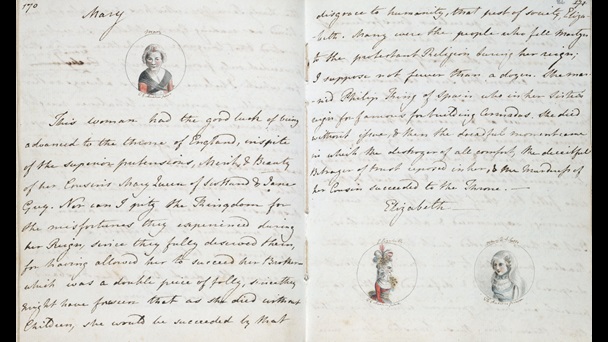
Jane Austen’s earliest writings appear to have little in common with the restrained and realistic society portrayed in her adult novels. By contrast, they are exuberantly expressionistic tales of sexual misdemeanor, of female drunkenness and violence. They are characterized by exaggerated sentiment and absurd adventures. Running through them is a pronounced thread of comment on and wilful misreading of the literature of her day, showing how thoroughly and how early the activity of critical reading informed her character as a writer. Jane Austen did not simply outgrow her juvenile notebooks. There is ample evidence that the same critical intelligence that created these satirical depictions of the conventions and stereotypes of late 18th-century fiction, conduct books, and stage farce, continued to work within the more realistic framework of her mature novels. First drafts of books eventually published as Sense and Sensibility, Pride and Prejudice, and Northanger Abbey were written soon after the last of the juvenilia. It is not too fanciful to find traces of the strong-minded heroines of these early experiments in Elizabeth Bennet’s unladylike energy (“crossing field after field at a quick pace, jumping over stiles and springing over puddles” Pride and Prejudice ch. 7) and Emma Woodhouse’s dangerously undisciplined imagination.
View facsimiles of Austen’s Juvenilia notebooks, including the History of England, on the Jane Austen’s Fiction Manuscripts Digital Edition website.
Tom Lefroy

Thomas Langlois Lefroy (1776-1869 ) was an Irish Politician and judge, who eventually rose to the position of Chief Justice of Ireland. He was one of 10 children born to Colonel Anthony Lefroy of Limerick and Anne Gardiner. As the eldest son, the family depended on him to “rise into distinction and there haul up the rest.” This rise in distinction, from being the son of a soldier, to the chief Justice of Ireland was facilitated by Tom’s uncle, Benjamin Lefroy. Uncle Benjamin, in reality, great-uncle to young Thomas and his brothers and sisters, had made his money in the banking industry in Italy, before returning to London to take on life as a politician. He was greatly concerned with the welfare of his family and provided generously for his relative’s education, praising his “good heart, a good mind, good sense, and as little to correct in him as ever I saw in one of his age.” Tom graduated with top honors from Trinity College in Dublin in 1795 and soon began studying law in London. At some point, however, it was decided that he should take a break. Family history maintains that long nights poring over books had weakened his constitution and his eyesight. It was clear that he needed a rest. With a new term beginning in January 1796, Tom took several weeks off in December of 1795 to visit his Uncle and Aunt, Rev. George and Anne Lefroy in Ashe, nearly 60 miles away.
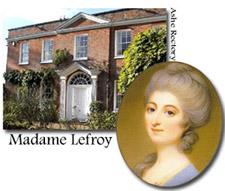
It was there that this young law student made his mark on history, for nearby to Ashe, at Steventon, lived the Austen family. Their younger daughter, Jane, was a great favorite of Tom’s Aunt Anne, though close to 30 years separated them in age. Anne Brydges Lefroy was, by all accounts a handsome woman who held great powers of persuasion over her children and friends, and in return was respected and loved by many. She was in many ways Lady Russell to young Jane Austen’s Anne Elliot. Although it is clear that many letters are missing, the account of this meeting that we do have is due to the fact that Jane Austen’s dearest friend and older sister, Cassandra, was at the time of Tom’s visit, visiting her own fiancé, Thomas Fowle. She was absent for the whole of Lefroy’s visit to Ashe and in fact never met this man who might have been her brother-in-law. Only two letters survive from this period of Jane Austen’s life, but they are invaluable to the scholar seeking information about this only known love interest who obviously shaped Jane’s outlook on love and life. Many have argued that the tone of these letters does not sound like a woman deeply in love. It is important to consider, however, that Jane, but 20 years old at the time, no doubt expected them to be read to or at least shared with the Fowle family, with whom Cassandra was staying. She perhaps wished to express less than she felt in order to avoid embarrassment with her friends. It is also known that after Jane’s death, Cassandra ruthlessly purged her letters, lest any that might seem too personal fall into the wrong hands. We will never know what the missing letters were that Jane wrote to her sister.
It is not unlikely for two attractive young people to fall in together and enjoy each other’s company. A few years earlier, Jane’s cousin, the worldly-wise Eliza de Fuillide, had described Cassandra and Jane as “perfect beauties [who] of course gain hearts by the dozen.” A portrait drawn of Tom Lefroy in 1796 shows a serious young man with the light hair typical of the family. His prominent nose and deep blue eyes certainly present an overall picture of a “very gentleman like, good-looking, pleasant young man.”
Tom and Jane first met in mid-December. As it was the Christmas season, balls were held frequently and Jane and this young student from Ireland met often and danced often. Jane even teased her sister about how often they stood up together and how they taught other couples a lesson on “being particular”. The two found much in common, sharing opinions and books. Their relationship was a close one, as evidenced by the fact that he lent her Tom Jones, an amazingly racy novel, not likely to be found on the shelves of her clergyman father’s library. Others, too, thought them a couple, as evidenced by one acquaintance sketching a picture of Tom for Jane to keep. Visits were exchanged at each other’s homes and this whirlwind relationship ended after four weeks with Jane rather expecting to receive an offer of marriage from Tom. Was such an offer made? One tends to think not. Though she steadfastly refuses to accept him in her letter (unless he gets rid of his white coat) her later sentence in the same letter betrays her cavalier attitude, “At length the day is come on which I am to flirt my last with Tom Lefroy, and when you receive this it will be over. My tears flow as I write at the melancholy idea.” Tom returned to his uncle’s house in London and to his studies. Many readers persist in thinking that Anne Lefroy sent him away in order to avoid an imprudent match on Tom’s part. Certainly, it would have been in his best interest to marry well. Anna Austen Lefroy, Anne Lefroy’s daughter in law and Jane Austen’s niece, refutes this theory. Though alone among her relatives, she wrote, in 1869,
I am the only person who has any faith in the tradition…but when I came to hear again & again, from those who were old enough to remember, how the Mother had disliked Tom Lefroy because he had behaved so ill to Jane Austen, with sometimes the additional weight of the Father’s condemnation, what could I think then? Or what now except to give a verdict . . . [of] ‘under mitigating circumstances’—As—First, the youth of the Parties—secondly, that Mrs. Lefroy, charming woman as she was, warm in her feelings, was also partial in her judgments—Thirdly—that for other causes, too long to enter upon, she not improbably set out with a prejudice against the Gentleman, & would have distrusted had there been no Jane Austen in the case. The one thing certain is, that to the last year of his life she was remembered as the object of his youthful admiration—
Perhaps the blame was Tom’s. Before he had even left the countryside, rumors of an engagement to another were being spread. It is true that by the next spring, in 1797, he was engaged to Mary Paul, the sister of a college mate.
Romantics may find it difficult to forgive the man who loved and left our favorite author, breaking her heart, perhaps forever—and yet, we must be grateful to him, as well. It is obvious that Jane knew love and could write with authority about love. Though she never admits it in the letters we have, it seems clear that she did love Tom Lefroy, and when asked about Jane, at the age of 94, Tom, too, admitted to loving Jane, though he qualified it by calling it a “boyish love”.
If she had married, it is doubtful that Jane would have had time or encouragement to write and without this period of awakening, without this loss, we may never have seen Jane Austen’s novels in print.
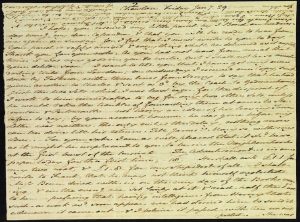
It is possible to see aspects of Tom Lefroy and his relationship with Jane in every hero she created, and in working out the lives of her heroines, is it not surprising that she gave each of them the happy ending she longed for? We cannot know if that night in Ashe was the last Jane ever saw of Tom. The very next letter that she wrote to Cassandra (August 1796) is dated from Cork Street, London, where Tom lived with his uncle Benjamin. “For the Austens to have stayed there by chance at this particular time, in the very street where Tom Lefroy was living, would have been a strange coincidence,” suggests Jon Spence in his book, Becoming Jane. History shows that there were no boarding houses or hotels in Cork Street during that time. “There is no direct proof that they stayed with Langlois and his nephew, but it looks as though they did.” Others suggest that Jane at least caught a glimpse of Tom later that year in Bath. He did visit his aunt in Ashe in 1797, but departed the country without visiting the Austens. This was clearly a difficult time for Jane, who wrote of this visit to her sister in November 1798,
Mrs. Lefroy did come last Wednesday…with whom, in spite of interruptions both from my father and James, I was enough alone to hear all that was interesting, which you will easily credit when I tell you that of her nephew she said nothing at all, and of her friend very little. She did not once mention the name of the former to me, and I was too proud to make any inquiries; but on my father’s afterwards asking where he was, I learnt that he was gone back to London in his way to Ireland, where he is called to the Bar and means to practise.
Thomas Lefroy been called to the Irish Bar in 1797, did Jane but know it, and there he became a prominent member, publishing a series of Law Reports on the cases of the Irish Court of Chancery. He married Mary Paul in 1799 and they had seven children. The eldest son Anthony Lefroy was also an MP for his father’s old seat of Dublin University. A daughter named Jane is often thought to have been named for Jane Austen, though a more likely candidate is his mother-in-law, Jane Paul. Thomas was elected to the House of Commons for the Dublin University seat in 1830, as a Tory (the party later becoming known as Conservative). He became a member of the Privy Council of Ireland on 29 January 1835. He continued to represent the University until he was appointed an Irish judge (with the title of a Baron of the Exchequer) in 1841. He was promoted to Chief Justice of the Court of Queen’s Bench in Ireland in 1852. Despite some allegations in Parliament, that he was too old to do the job, Lefroy did not resign as Chief Justice until 1866 when, at the age of 90, a Conservative government was in office to fill the vacancy. He died in 1869.
First Impressions
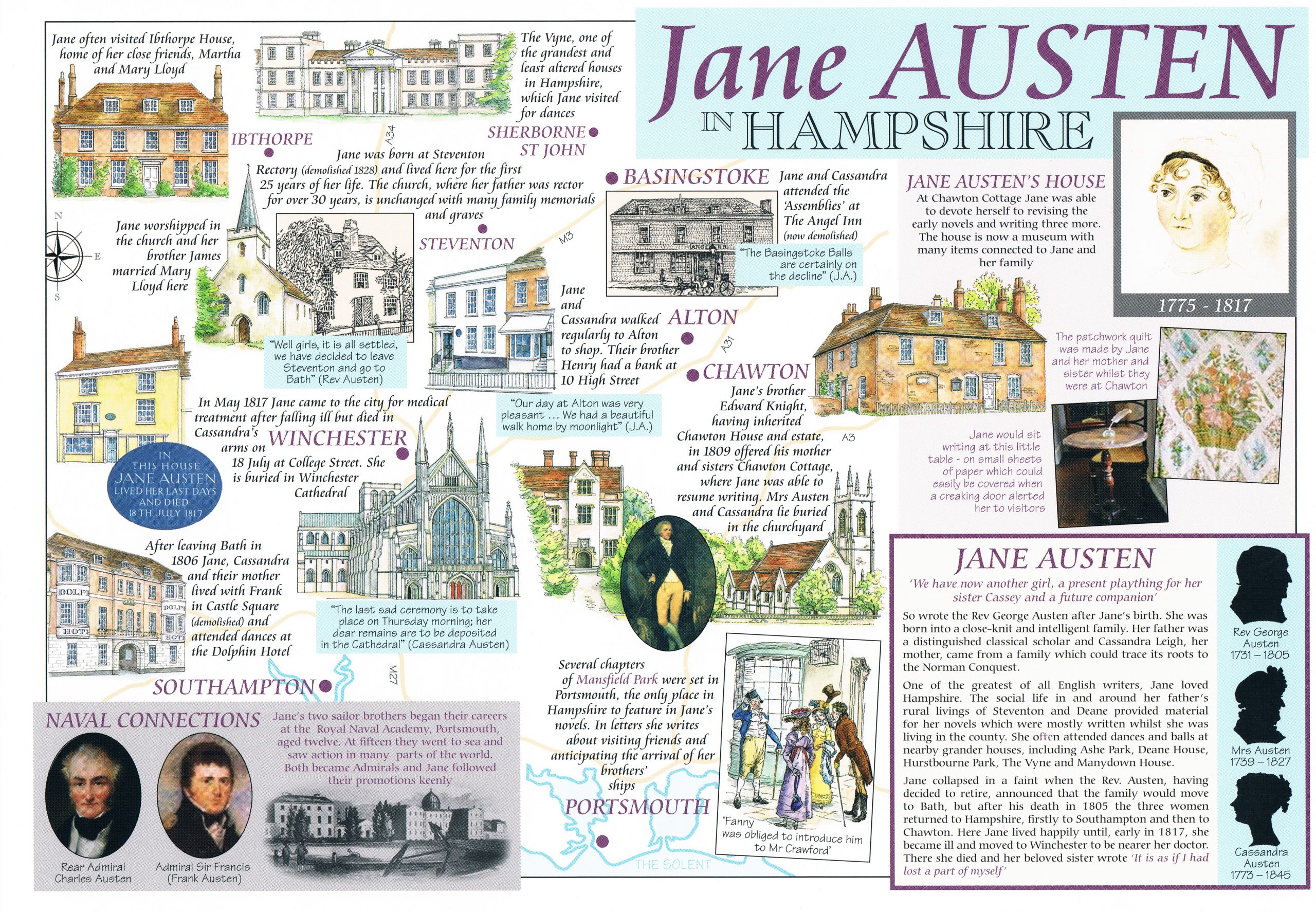 After this brush with love, Jane set out to pen the work First Impressions. Little did she know at the time that this single work would become her most popular and enduring piece, becoming the story now known as Pride & Prejudice. The first draft was completed sometime in 1799. Always the supportive father, Mr. Austen takes a serious step to help his talented daughter succeed. With one of her works, he attempted to have the piece published through Thomas Cadell, a publisher based in London. The attempt fell flat as Cadell was quick to reject the work, not even bothering to open the package. It remains unknown if Jane knew of her father’s attempt at assisting her in her career.
After this brush with love, Jane set out to pen the work First Impressions. Little did she know at the time that this single work would become her most popular and enduring piece, becoming the story now known as Pride & Prejudice. The first draft was completed sometime in 1799. Always the supportive father, Mr. Austen takes a serious step to help his talented daughter succeed. With one of her works, he attempted to have the piece published through Thomas Cadell, a publisher based in London. The attempt fell flat as Cadell was quick to reject the work, not even bothering to open the package. It remains unknown if Jane knew of her father’s attempt at assisting her in her career.
Jane returned to work on Elinor and Marianne, completing all revisions to the story by 1798. The revisions are quite substantial in that she removed the epistolary point of view of the storytelling and instituted a more traditional third person. With the work up to her new standard now, she began serious work on Susan. Susan is the work that would go on to become Northanger Abbey. But before work on Susan was completed, Jane decided to revisit the short play she had attempted all those years before – Sir Charles Grandison or the Happy Man. In this go-round, Jane saw her first play to completion all while finding time to finish Susan.
The Austens Say Goodbye to Steventon
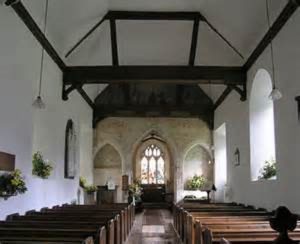
As with most Decembers in the Austen family history, the December of 1800 brought about some great news. Jane’s father George announced that he was retiring from the clergy, an announcement that seems to take the Austen family by complete surprise. This meant that their stay in Steventon was all but over, much to the dismay of Jane, who had formed an attachment to the one and only home she has known her entire life. Now at age 27, she and the entire Austen family moved to the town of Bath for the Austen parent’s retirement life. Jane did not like Bath, and living her presumably made her so depressed that she was unable to write. It does appear that she made any edits to her finished manuscripts or started on any new ones during this time.
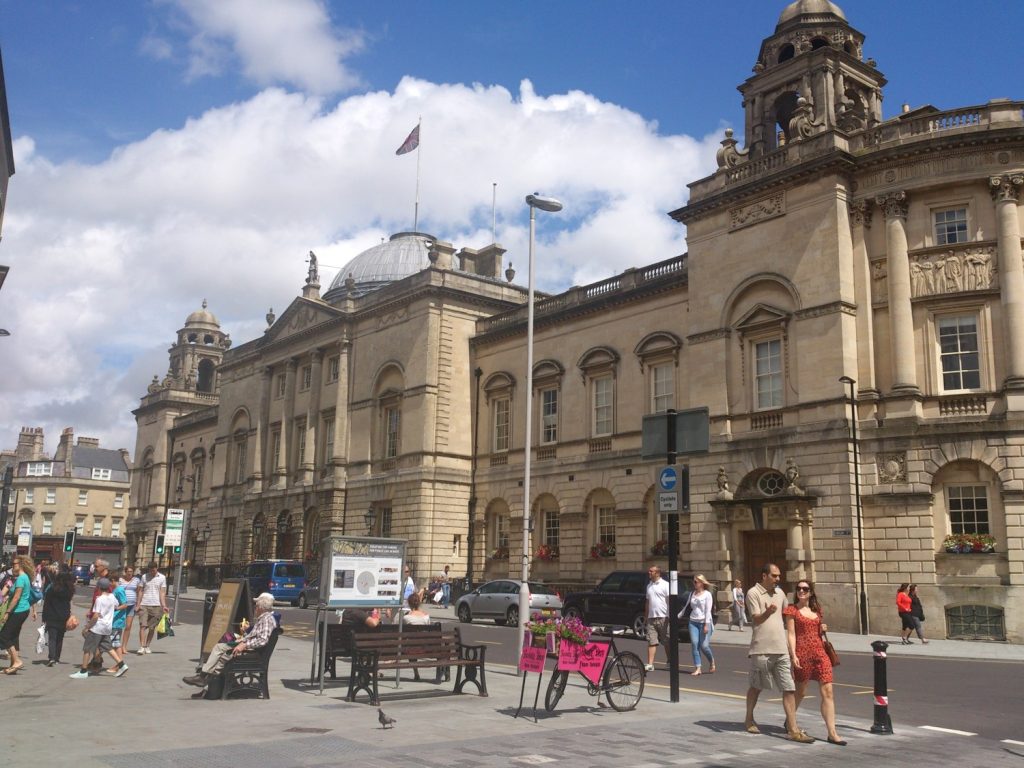
A Proposal of Marriage

Now we come to the part of the story where Jane’s novels meet real life. Enter the real life character in the form of Harris Bigg-Wither, a childhood friend of the family and of Jane’s. Once again in the month of December – this time in 1802 – Jane receives her one and only known proposal of marriage from Mr. Bigg-Wither. Sensing the practical measure of both their situations, Jane agrees to the marriage. Bigg-Withers is due to inherit a sizeable amount of real estate and is well off. His one negative seems to be Jane’s indifference to the man as a whole. She expressed no true love for him, no affection whatsoever, but the convenience of being provided for and for her family’s future as well seemed to have dictated her acceptance of the proposal. In a turn very much like one of her penned characters, however, Jane revoked her acceptance the next day. In a letter to her niece some years later, a family member seeking relationship advice from Jane, Jane makes a pivotal comment in her writing that is a summary of many of her stories – her advice to the niece is simply not to wed if the affection is not there. This revelation is a shining insight into the mind of Austen, seemingly taken out of the very pages of one of her novels, where her heroines did not choose to marry for money or power, but for love.
In 1803, brother Henry visited a London publisher by the name of Benjamin Crosby to help push the Susan novel into publication. The copyright for the work is sold for 10 pounds to Crosby with the promise that the piece will be published. Unfortunately, Crosby never fulfilled his end of the bargain in any acceptable timeframe and a tug-of-war over control of the copyright will go on for some time. Nevertheless, Jane continued working, this time on a piece entitled The Watsons.
Chawton Cottage
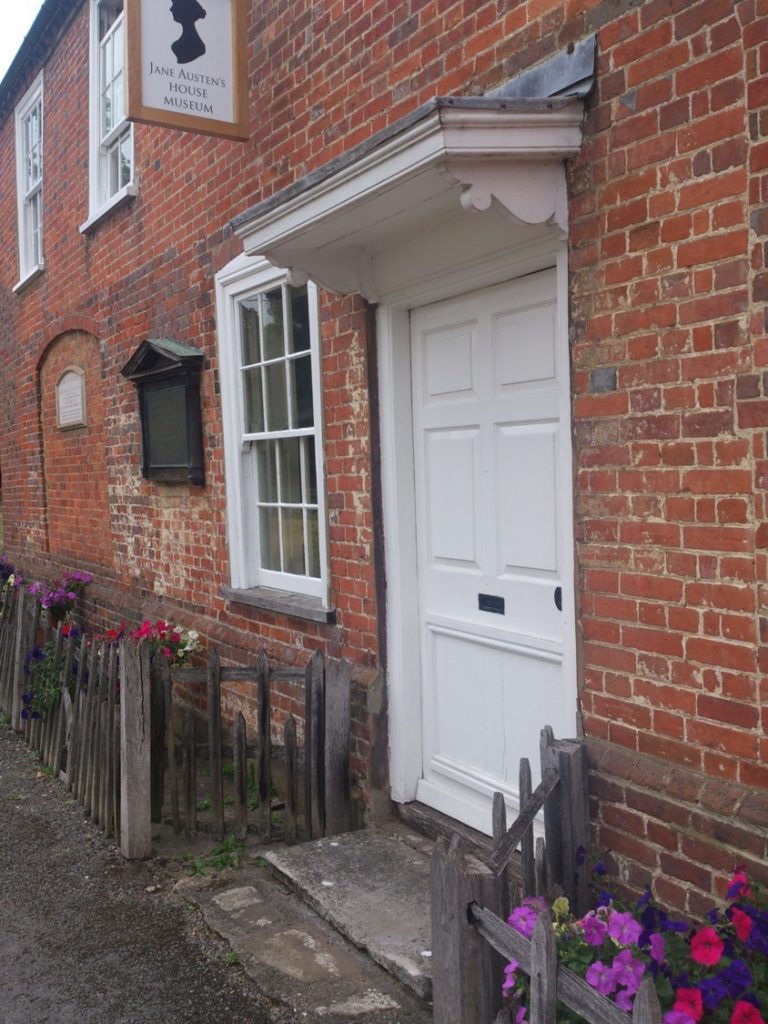
January 21st of 1805 brought about startling changes to the landscape of the Austen world. Beloved father George Austen – already falling quickly ill – died to the shock of the family. This period of time forced Jane to put off work on The Watsons indefinitely as the Austen family is thrown into a kind of crisis. The Austen brothers all agree to help support Mrs. Austen and her two daughters though the girls are forced to live an unsettled life of constant moving and renting out their living quarters. Eventually, the women move in with brother Edward who later offers a cottage on a nearby property to the girls. This cottage – known as Chawton cottage – would rejuvenate the 33-year-old Austen into a period during which she would make great strides in her work, nearly as great as her younger years.
To begin with, Jane penned an angry letter to Benjamin Crosby, the publisher in London with a hold on the Susan copyright. Since the work had yet to be published by Mr. Crosby, Jane submits a new revised version of the novel to force Crosby’s hand to either publish the work or return the copyright to her so she may find another, more willing, publisher. Crosby agrees to Jane’s demand, though in a shrewd business move, allows Jane access to the copyright of Susan only if she can pay the equal 10 pounds back to him for it. With the Austen family financial future severely in doubt at this point, Jane was forced to decline the offer for the time being, leaving Susan out of her control for still more time.
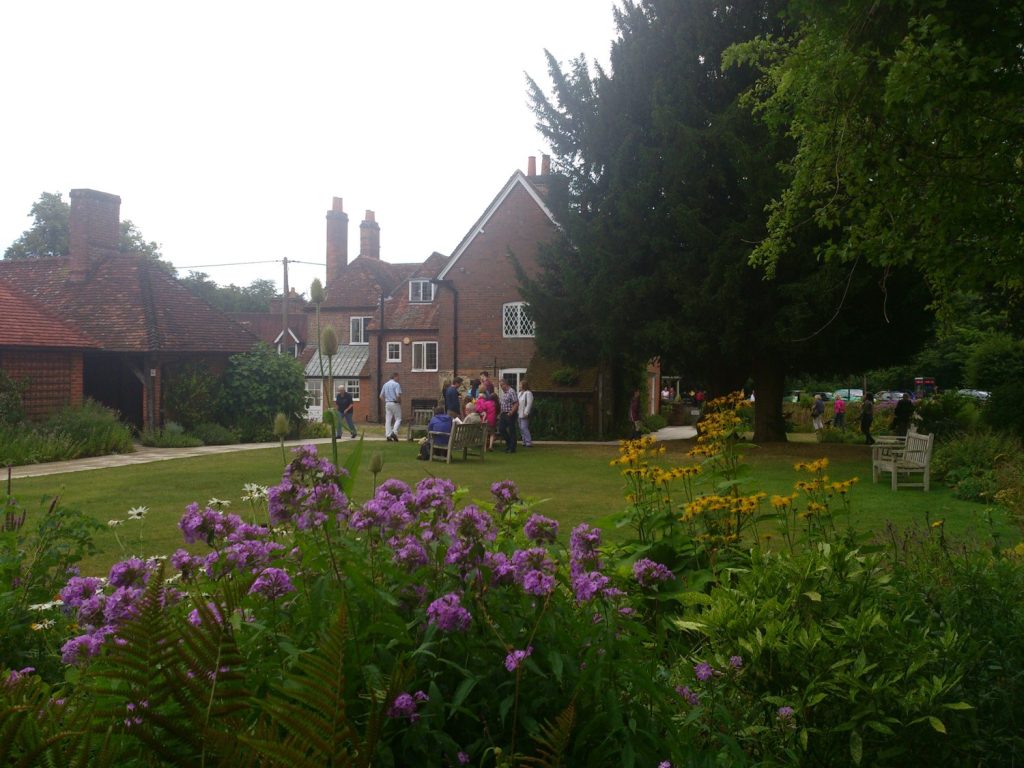
Life in Chawton cottage proved to be a godsend for the women. Now fully settled in a quiet environment, Jane saw it fit to continue her work. Her sister and mother even acknowledged her talent and took away some of her required chores to allow her to work unfettered. This she did in a very private way, but still more productively than ever before.
Sense & Sensibility
Henry Austen, working on a burgeoning banking career on his own with help from his brother’s investing, doubled as Jane’s literary agent and approached London publisher Thomas Egerton with the manuscript for Sense & Sensibility. Egerton agreed to publish the piece and fulfilled his end of the deal. The novel is published in October of 1811 and comes out to favorable reviews. The piece is a financial success for the family, the first edition selling out completely by 1813.
Pride & Prejudice
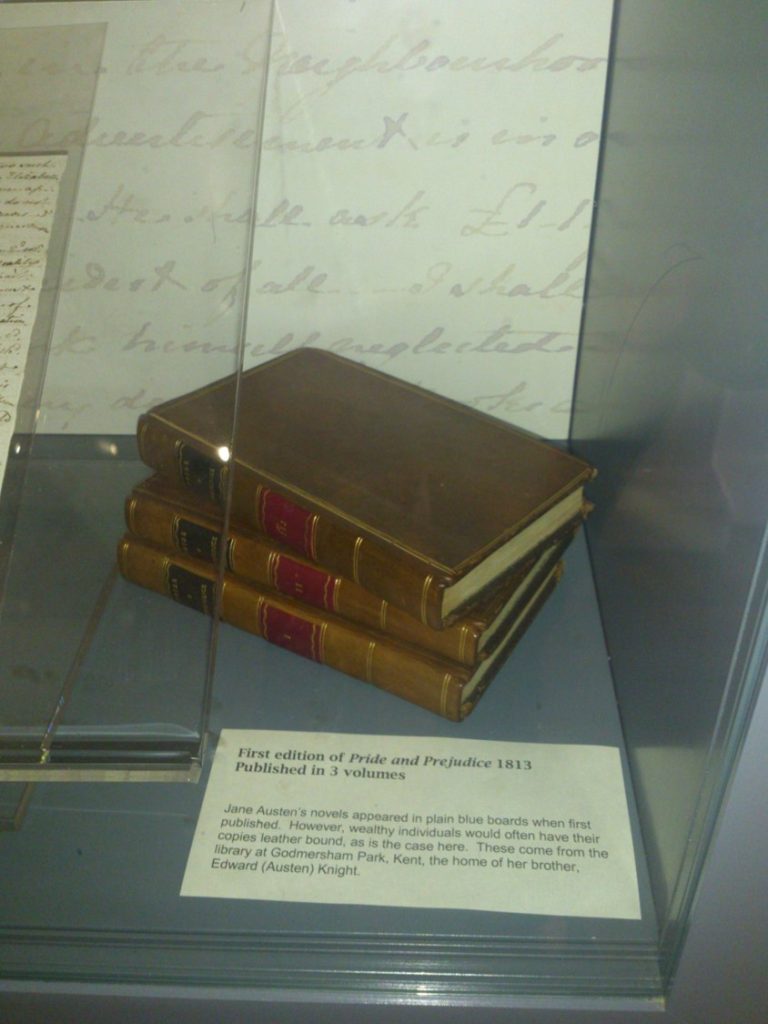
Egerton then took the manuscript of Pride & Prejudice and published this second work for public consumption in January of 1813. This time around, Egerton put a fair amount of time and money into marketing Jane’s work and the novel was an instant success with the public and critics alike. The success is so great that a second edition of printing was quickly ordered by October.
Mansfield Park
Mansfield Park quickly followed, Egerton striking while the iron was hot. The piece was received in lukewarm fashion by reviewers, but the public could not get enough of Jane Austen. Another modest monetary success greeted the Austen family. In fact, Mansfield Park, with all copies sold, became the best-selling and most profitable of Austen’s works at that time. In an effort to bring even more success to her novels, Jane left the services of Egerton in favor of a more well-known London publisher, John Murray. Murray would be the final publisher to work with Austen before her untimely death.
Emma
Under Murray’s watch, Emma, a second edition of Mansfield Park, Northanger Abbey, and Persuasion were published. Emma arrived with critical success, but the second edition printing of Mansfield Park is not so successful, basically negating the earnings Jane received from the former. At this time, the banking venture pursued by brother Henry failed, and along with it, the fortunes of brothers Edward, James, and Frank. This left the Austen girls – and family for that matter – in a precarious financial position. Jane continued writing, even more dedicated to complete a working first draft of The Elliots, though this work would later be more recognized as Persuasion. It is at this time that Henry takes it upon himself to repurchase the copyright of Susan from Crosby & Company and does so for the 10 pounds originally paid. The title of the work, however, is now changed to Catherine, which led some historians to believe that there may have been another novel out in print at the time with the same title of Susan.
The Decline of Jane Austen
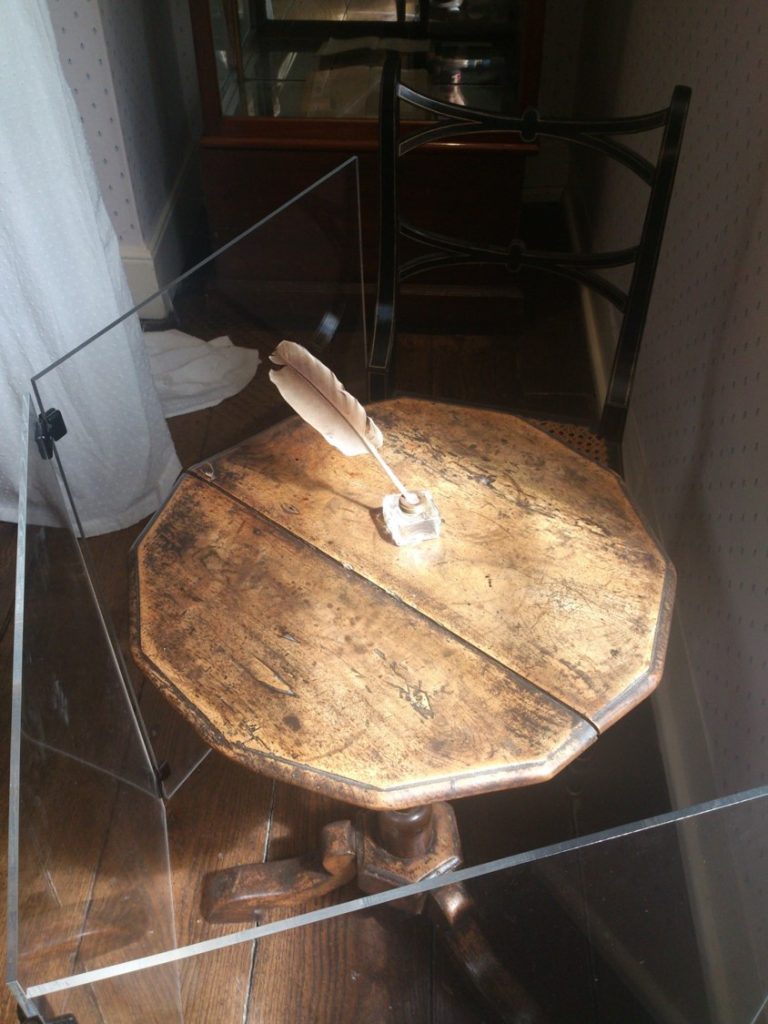
At the beginning 1816, Jane noticed a decline in her health, but disregarded it in favor of continuing the works she started. With so much happening, Jane’s health declined quickly with each passing day. Her family began to take note. Though progressively unwell, Jane maintained an upbeat attitude and played off her illness to family and friends, all the while rewriting the final two chapters of The Elliots to her liking. The piece is eventually finished and, by January 1817, Jane is hard at work on a new project entitled The Brothers. Twelve chapters of the work are completed before her illness takes a more serious toll on Jane. The simple act of walking at age 41 became a chore and energy was greatly exhausted performing the simple tasks of a given day. By April, Jane was confined to her bed and her work suffered as well.
Death
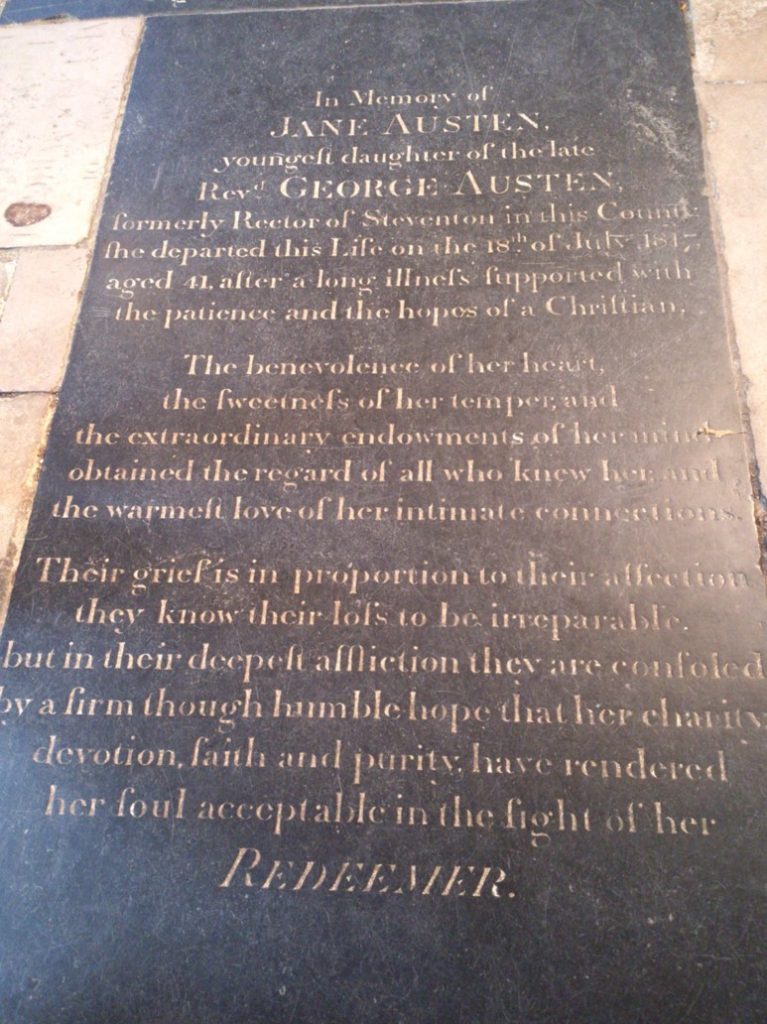
In May of 1817, brother Henry and sister Cassandra sought medical help for their ailing sister. They escorted Jane to Winchester to seek medical treatment for an illness that – at that time – could not possibly have had a cure. On July 18th, 1817, Jane Austen died in Winchester, and with her, she took the conclusions of her unfinished works. With his connections, Henry worked to have his sister buried at the Winchester Cathedral. Interestingly, her gravestone, which is visited by hundreds of admirers each year, does not even mention that she was an author.
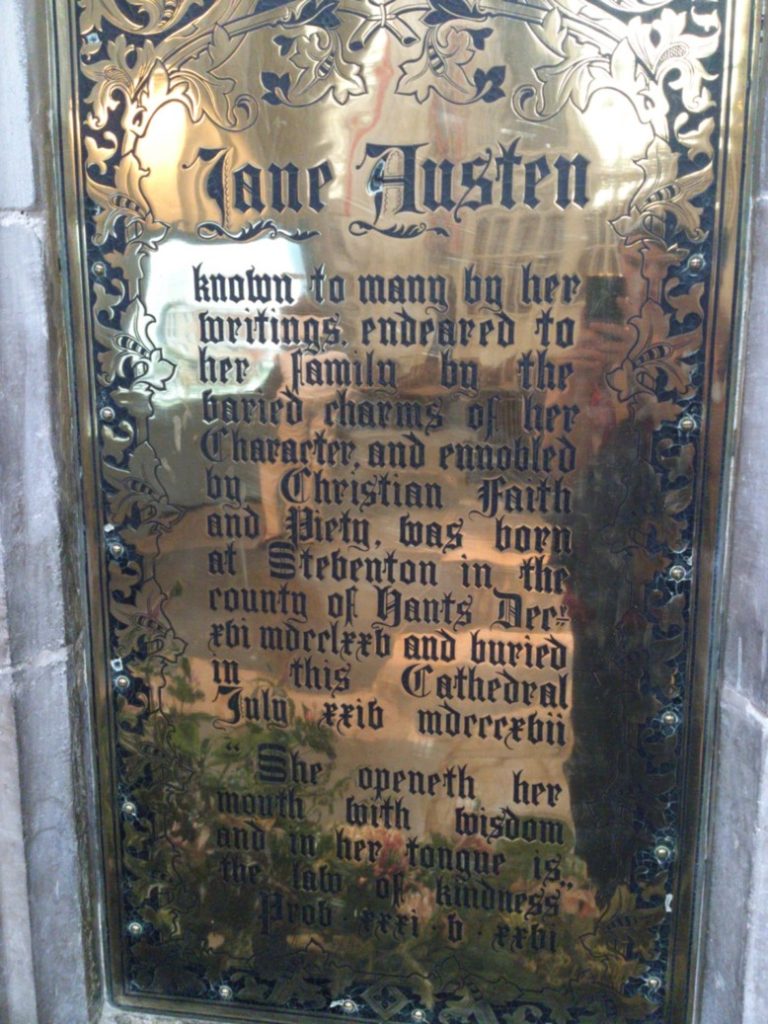
Not content with seeing her final completed works go unpublished, Henry and Cassandra worked at getting Northanger Abbey and Persuasion published through Murray as a set collection. Within this work, however, Henry penned a most endearing account of the author of the works – who at this point was still nameless to the world. He unveiled her as Jane Austen, connecting her to her work for the first time in her career.
In many ways, Jane Austen embodied the very strong-natured, head-strong women that were her stories. They came from different circumstances with different backgrounds, yet all sought the same thing in true love. It is an irony that such a thing eluded the great Austen herself, but perhaps to the betterment of her stories and ours. In the end, we are left with what are truly timeless pieces of art. Despite penning just six completed works, she has spawned a legion of followers that devour every word she wrote. In her life, and even after her death, but most importantly through her works, she has left all readers with the fanciful notion of love revealed, love enduring. Persuasion and Northanger Abbey were published together in December 1817 with a “Biographical Notice” written by Henry, in which Jane Austen was, for the first time in one of her novels, identified as the author of Sense and Sensibility, Pride and Prejudice, Mansfield Park, and Emma.


